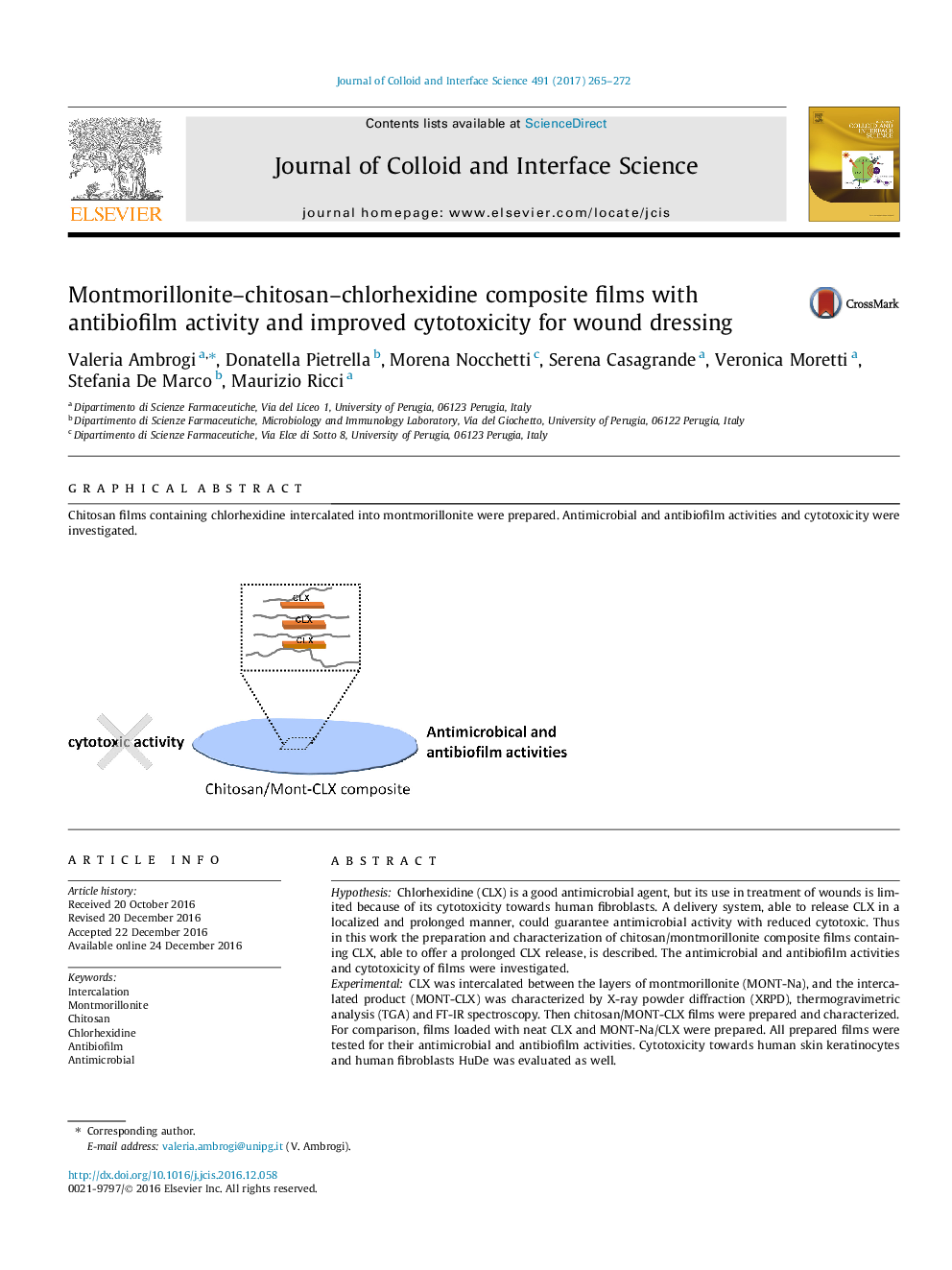| Article ID | Journal | Published Year | Pages | File Type |
|---|---|---|---|---|
| 4984944 | Journal of Colloid and Interface Science | 2017 | 8 Pages |
HypothesisChlorhexidine (CLX) is a good antimicrobial agent, but its use in treatment of wounds is limited because of its cytotoxicity towards human fibroblasts. A delivery system, able to release CLX in a localized and prolonged manner, could guarantee antimicrobial activity with reduced cytotoxic. Thus in this work the preparation and characterization of chitosan/montmorillonite composite films containing CLX, able to offer a prolonged CLX release, is described. The antimicrobial and antibiofilm activities and cytotoxicity of films were investigated.ExperimentalCLX was intercalated between the layers of montmorillonite (MONT-Na), and the intercalated product (MONT-CLX) was characterized by X-ray powder diffraction (XRPD), thermogravimetric analysis (TGA) and FT-IR spectroscopy. Then chitosan/MONT-CLX films were prepared and characterized. For comparison, films loaded with neat CLX and MONT-Na/CLX were prepared. All prepared films were tested for their antimicrobial and antibiofilm activities. Cytotoxicity towards human skin keratinocytes and human fibroblasts HuDe was evaluated as well.FindingsAll prepared films showed good antimicrobial and antibiofilm activities. As concerns cytotoxicity the film containing MONT-CLX at 1% CLX concentration resulted no cytotoxic. These results confirm the potential use of chitosan films containing MONT-CLX as a potential wound dressing material to prevent microbial colonization in wounds.
Graphical abstractChitosan films containing chlorhexidine intercalated into montmorillonite were prepared. Antimicrobial and antibiofilm activities and cytotoxicity were investigated.Download high-res image (119KB)Download full-size image
